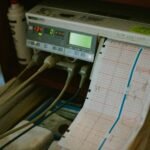Pharmacy Practice MCQ, in this article we will solve, Practice MCQ under subject Microbiology. Read following article for your reference.
Application Of Cell Cultures In Pharmaceutical Industry And Research » PHARMACAREERS
- What is the primary use of cell cultures in the pharmaceutical industry?
- a) Enhancing product flavor
- b) Studying drug interactions and effects
- c) Reducing production costs
- d) Improving packaging aesthetics
- Which type of cells are commonly used in cell culture for pharmaceutical research?
- a) Bacterial cells
- b) Animal cells
- c) Plant cells
- d) Fungal cells
- What is the role of cell cultures in drug development?
- a) To provide a model for testing drug efficacy and safety
- b) To reduce the cost of drug production
- c) To enhance the color of pharmaceutical products
- d) To improve product packaging
- Which of the following is an advantage of using cell cultures in research?
- a) High replication accuracy
- b) Reduced need for animal testing
- c) Lower contamination risk
- d) Faster product development
- Which type of cell culture is often used to produce monoclonal antibodies?
- a) Primary cell culture
- b) Established cell line
- c) Transformed cell line
- d) Hybridoma cell line
- What is a common application of cell cultures in toxicology studies?
- a) Assessing the impact of chemicals on cell viability
- b) Enhancing the flavor of products
- c) Measuring the color of products
- d) Reducing production costs
- Which type of cell line is frequently used for vaccine production?
- a) Primary cell culture
- b) Established cell line
- c) Transformed cell line
- d) Hybridoma cell line
- How are cell cultures used in personalized medicine?
- a) To study individual genetic responses to treatments
- b) To enhance product packaging
- c) To improve the taste of medications
- d) To reduce manufacturing costs
- What is the role of cell cultures in cancer research?
- a) To provide a model for studying cancer cell behavior and testing treatments
- b) To improve the aesthetics of pharmaceutical products
- c) To reduce the cost of drug development
- d) To measure the flavor of products
- Which technique is commonly used to assess the efficacy of new drugs using cell cultures?
- a) Colorimetric assay
- b) Viability assay
- c) Spectrophotometry
- d) Microscopy
- What is a key benefit of using three-dimensional (3D) cell cultures in research?
- a) Improved simulation of in vivo conditions
- b) Enhanced cell growth rates
- c) Reduced need for growth factors
- d) Lower contamination risk
- Which application of cell cultures involves testing the genetic stability of cell lines?
- a) Genomic studies
- b) Vaccine production
- c) Toxicology studies
- d) Drug screening
- How are cell cultures used in the study of infectious diseases?
- a) To provide a model for studying pathogen-host interactions
- b) To enhance the flavor of products
- c) To reduce the cost of drug production
- d) To improve product packaging
- Which cell culture technique is used to produce recombinant proteins?
- a) Gene expression in transformed cell lines
- b) Cryopreservation
- c) Cell fusion
- d) Electroporation
- What is the purpose of using cell cultures in pharmacokinetics studies?
- a) To study the absorption, distribution, metabolism, and excretion of drugs
- b) To measure the color of products
- c) To enhance product flavor
- d) To reduce manufacturing costs
- Which application of cell cultures involves testing the effects of potential drug interactions?
- a) Drug screening
- b) Genomic studies
- c) Vaccine production
- d) Toxicology studies
- What is a common use of primary cell cultures in pharmaceutical research?
- a) Studying cell differentiation and development
- b) Enhancing product packaging
- c) Improving the taste of medications
- d) Reducing manufacturing costs
- How are cell cultures used in regenerative medicine?
- a) To develop cell-based therapies for tissue repair and regeneration
- b) To improve the aesthetics of pharmaceutical products
- c) To reduce the cost of drug development
- d) To measure the flavor of products
- Which application of cell cultures involves studying the molecular mechanisms of diseases?
- a) Disease modeling
- b) Vaccine production
- c) Toxicology studies
- d) Drug screening
- What is a key advantage of using cell cultures for high-throughput screening of drug candidates?
- a) Rapid testing and analysis
- b) Enhanced product flavor
- c) Lower production costs
- d) Improved packaging aesthetics
- Which type of cell culture is often used to produce therapeutic proteins and enzymes?
- a) Primary cell culture
- b) Established cell line
- c) Transformed cell line
- d) Hybridoma cell line
- How are cell cultures used in the study of gene expression?
- a) To analyze the effects of genetic modifications on cell behavior
- b) To enhance the flavor of products
- c) To reduce the cost of drug production
- d) To improve product packaging
- What is a common use of cell cultures in the development of cancer treatments?
- a) Testing the efficacy of chemotherapeutic agents
- b) Enhancing product aesthetics
- c) Improving the taste of medications
- d) Reducing manufacturing costs
- Which application of cell cultures involves testing the cytotoxicity of chemical compounds?
- a) Toxicology studies
- b) Vaccine production
- c) Genomic studies
- d) Drug screening
- What is the significance of using serum-free media in cell culture?
- a) Providing a defined and consistent culture environment
- b) Enhancing cell adhesion
- c) Increasing pH
- d) Sterilizing the medium
- How are cell cultures used in biotechnology?
- a) To produce biologically active compounds
- b) To improve the aesthetics of pharmaceutical products
- c) To reduce the cost of drug development
- d) To measure the flavor of products
- What is a common application of cell cultures in neuroscience research?
- a) Studying neuronal function and development
- b) Enhancing product packaging
- c) Improving the taste of medications
- d) Reducing manufacturing costs
- How are cell cultures used in the study of metabolic disorders?
- a) To analyze cellular metabolism and enzyme activity
- b) To enhance the flavor of products
- c) To reduce the cost of drug production
- d) To improve product packaging
- Which application of cell cultures involves testing the immunogenicity of new vaccines?
- a) Vaccine development
- b) Genomic studies
- c) Toxicology studies
- d) Drug screening
- What is a key benefit of using cell cultures in the pharmaceutical industry?
- a) Providing a controlled environment for studying cellular responses
- b) Enhancing product aesthetics
- c) Improving the taste of medications
- d) Reducing manufacturing costs
For more regular updates you can visit our social media accounts,
Instagram: Follow us
Facebook: Follow us
WhatsApp: Join us
Telegram: Join us






One response to “Pharmacy Practice MCQ”
[…] For practice MCQ on this article, click here. […]